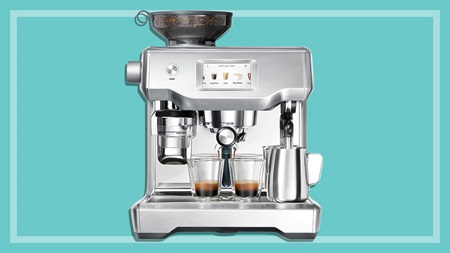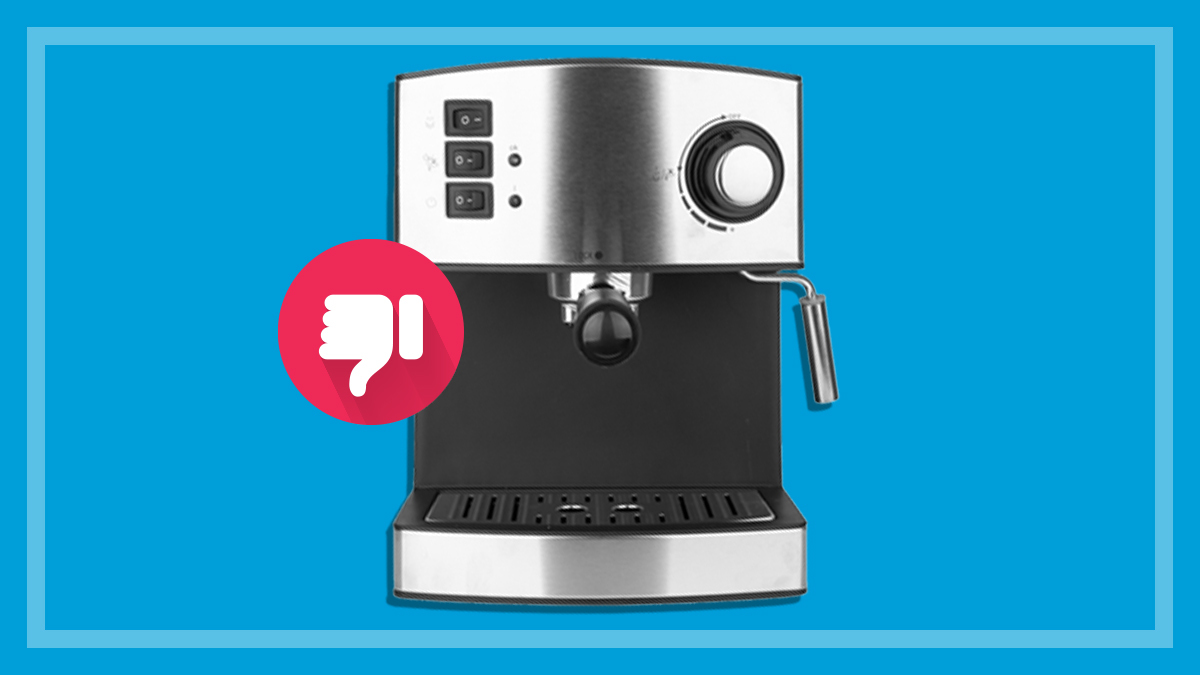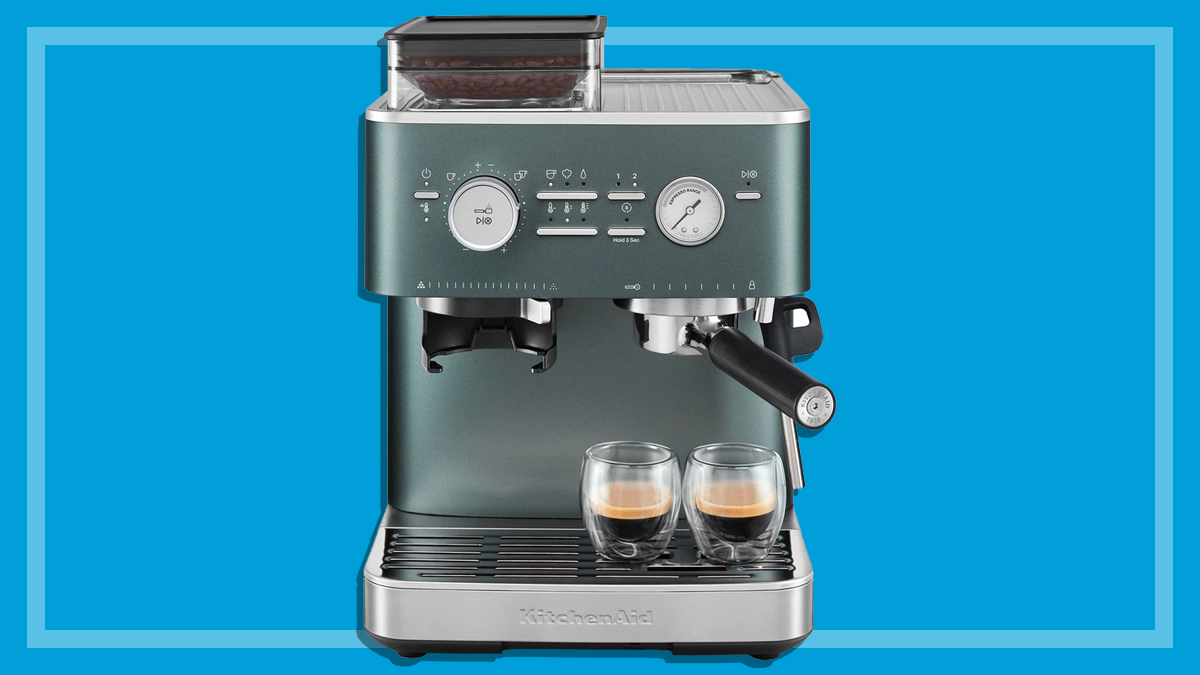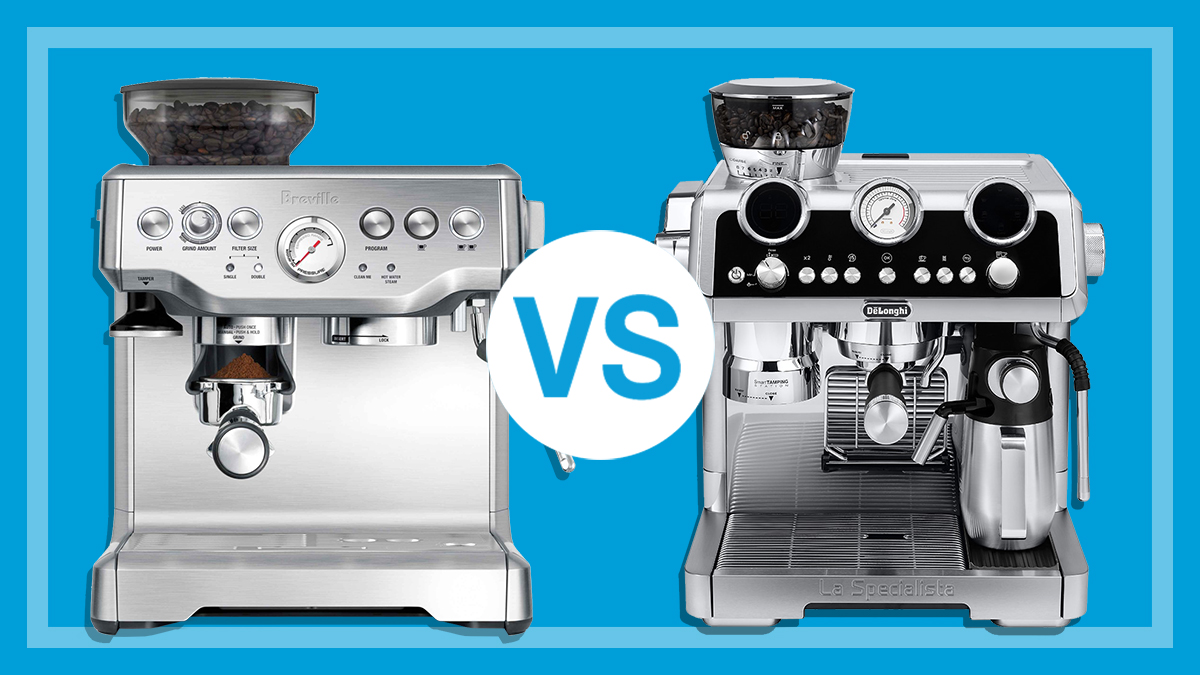Get our independent lab tests, expert reviews and honest advice.
Which coffee machine is right for you?
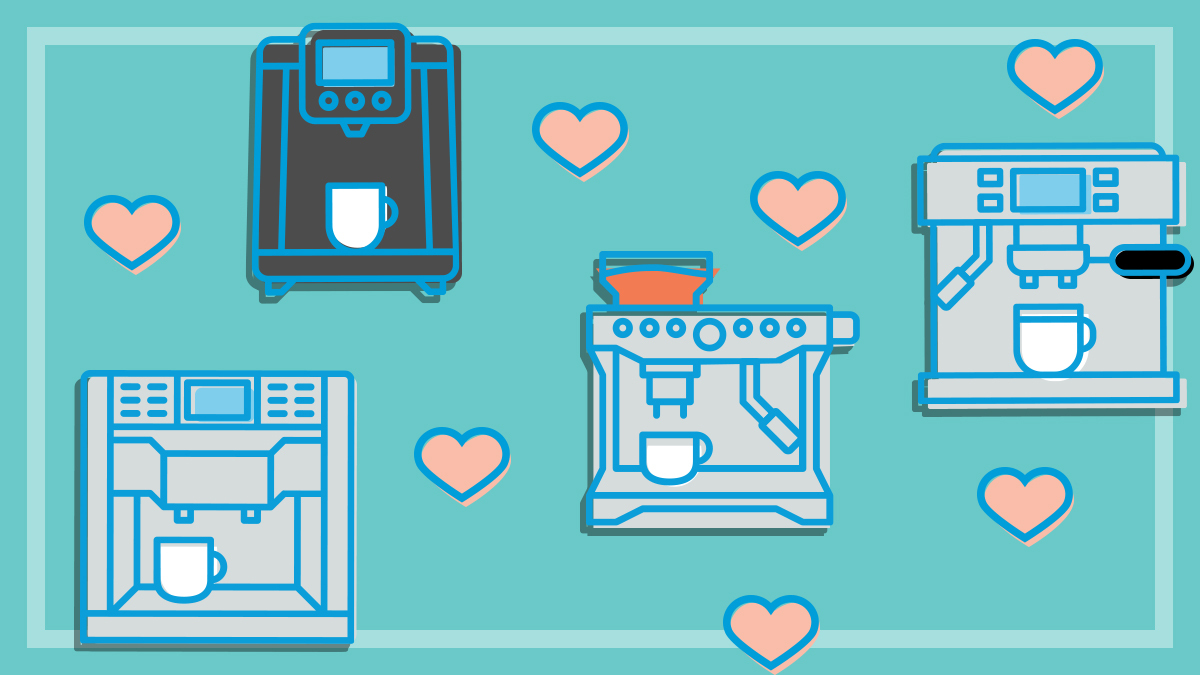
Committing to a coffee machine is a big deal. Choose well and you’ll have a happy partnership that (literally) fills your cup every day. Choose poorly and you’ll be left with a bitter taste in your mouth.
On this page:
- Perfect match: A pod machine
- Perfect match: A semi-automatic espresso machine
- Perfect match: An automatic espresso machine
- Perfect match: A manual espresso machine
But before you change your relationship status, it’s important to identify what you do and don’t want. We’ll talk you through the different coffee machines you’re likely to find on your path to true love, and how to decide which is your perfect match.
Once you’ve figured out what you’re looking for, you can find the best coffee machine in our reviews by filtering by brand, style, price, and more, to eliminate the deal breakers and red flags and find the machine of your dreams.
How to decide which coffee-making style suits you best
What are you looking for in a new (coffee) partner? Do you tend to fall hard and fast, or are you happy to take things a little slower and develop a deeper connection?
If you’re all about convenience, a pod or automatic machine is your perfect match. If you’re all about taste and don’t mind investing time in the relationship, you’ll fall for a manual or semi-automatic machine.
What’s your coffee love language?
- Acts of convenience: You want coffee, quickly – pod machine
- Quality time: You’ll put in the work to make good coffee – semi-automatic machine
- Nerds of caffeination: You geek out over all things coffee – manual machine
- Physical touch: You want cafe-quality coffee at the press of a button – automatic machine
Which coffee machine is your perfect match?
Quick convenience: Pod machine
Button-press perfection: Automatic machine
Easy, tasty coffee: Semi-automatic machine
Full control: Manual machine
CHOICE perfect match: Coffee edition
These four coffee-loving CHOICErs have found their perfect match in a coffee machine. We explain the pros and cons of each type of machine to help you find your perfect match.
Zara: Admin assistant who lives in a four-person household

As office administrator at CHOICE, Zara needs to be ready to go first thing in the morning, with as little fuss as possible. She drinks her coffee black and likes to mix things up with a flavoured coffee or two occasionally.
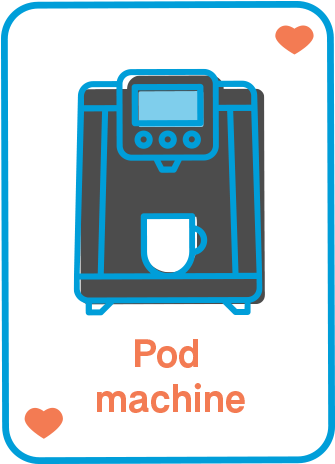
Perfect match: A pod machine
So why does Zara prefer a pod machine? For a busy household with multiple coffee-drinkers vying for the machine, simple and straightforward is the way to go. A pod or capsule machine ticks the boxes in terms of speed, ease of use and clean-up time.
What Zara says about her perfect match:
“I’m in a long-term relationship with an Aldi pod machine and it’s a cracker. I probably wouldn’t bother with a frother because for a home coffee they taste great. There’s not much I don’t love about it, honestly!”
Pod machines pros
Pod machines are nice and easy to use, so they’re handy for coffee novices. No fiddling with a steam wand or tinkering with the grind: just pop the pod in, press the button and you’re done.
They take very little time to do their thing, and there’s not much to clean up afterwards: you’ll just need to dispose of the pod (preferably by recycling, but that’s not always as easy as it should be).
They take very little time to do their thing, and there’s not much to clean up afterwards
They’re also an affordable way to get started, with a basic pod machine costing as little as $70. You can add a milk frother too if you’d like to take your coffee to the next level, but you won’t need any other equipment. This means that they take up far less bench space than other types of machines, making them especially useful for small or crowded kitchens.
If your regular pod coffee isn’t hitting the spot and you want to try something new, there’s a range of different strengths and (for some brands) different flavours as well – think Irish cream, caramel coffee and even hot chocolate mixes.
Pod machine cons
While they’re cheap to buy, pod machines can end up costing you more in the long run due to the cost of the pods. Pods can cost up to $100/kg, which is incredibly steep when compared to ground coffee or coffee beans which can cost as little as $12/kg from the supermarket.
There’s also the environmental impact to consider: pods are a single-use item made of aluminium and plastic that can take between 150 and 500 years to break down in landfill. You can recycle some pods, but it’s not always easy, nor is it clear how many pods end up being recycled even if you do get them to a recycling program.
Compostable, biodegradable and recyclable coffee pods do exist, but you’ll need to find a brand that’s compatible with your machine.
Pods can cost up to $100/kg, which is incredibly steep when compared to ground coffee or coffee beans which can cost as little as $12/kg from the supermarket
Alternatively, you could try refillable stainless steel coffee capsules. However, they can be fiddly to fill, empty and clean, which does negate some of the convenience of using pods. You can fill them with your preferred coffee, which can bring the per-cup price down, but there’s no guarantee you’ll get the same results as you get from store-bought pods.
The biggest drawback of pod machines is that you don’t really have any control over the coffee: the grind, dose, tamp and extraction time are all fixed, so you can’t tweak anything to improve the flavour. And unfortunately pod machines generally don’t deliver in terms of taste: our test results show that manual machines overwhelmingly deliver better tasting coffee than pod machines.
Pod vs manual machines: which is best for you?
Bea: Ex-barista who’s particular about her coffee
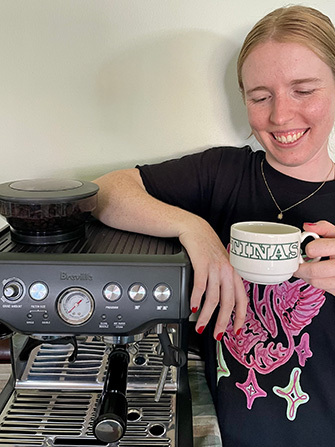
Senior policy and campaigns advisor Bea developed a love of coffee while working as a barista during her studies. While she has now hung up her apron for good, she still appreciates a good brew but can’t justify the skyrocketing costs of cafe coffees. She knows her way around a commercial coffee machine but also wants to keep things relatively simple at home.
Perfect match: A semi-automatic espresso machine
Why? If you’re confident handling a coffee machine and know a thing or two about coffee, you’ll most likely prefer a machine that gives you control over the process – it means you can make your coffee exactly the way you like it and you’re likely to get a better-tasting coffee than on an automatic or pod machine.
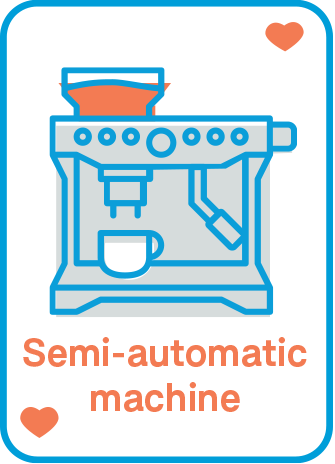
What Bea says about her perfect match:
“My partner bought me a Breville Barista Express as a gift, and initially I was a bit snobby about home machines because I didn’t think you could get the same quality of coffee.
“But now I actually prefer my home coffees because I can adjust the temperature, strength, and so on and make iced or hot coffees. It’s very customisable and so much cheaper than cafe coffee at the moment.
“I’d say we spend about $12 a week on milk and coffee beans for a minimum of 10 coffees.
“Honestly, there’s nothing I don’t love about it, other than the fact that you have to change the filter, but I’d say that’s pretty standard and I’m just forgetful.”
Semi-automatic machine pros:
A semi-automatic machine is the best of both the manual and automatic worlds: you get all the control of a manual machine with some of the convenience of an automatic machine – so you get a cafe-quality coffee, faster.
Rather than manually doing everything from grinding, dosing, tamping and extracting and steaming your milk, a semi-automatic machine takes care of some of these steps for you. This means you can concentrate on steaming your milk or putting the toast on while the machine takes care of the espresso.
They’re often far cheaper than fully automatic machines, and you don’t need to spend a fortune to pick up a great machine
Since you can control how the coffee is made, you’re likely to get a much better-tasting coffee than from a pod or automatic machine (once you’ve figured out how to use it). And you can choose your own beans, which you can’t do with a pod machine using conventional pods.
They’re often far cheaper than fully automatic machines, and you don’t need to spend a fortune to pick up a great machine. You can go all out and drop thousands of dollars on a semi-automatic machine, but a number of models recommended by our experts come in at $600 or less.
Semi-automatic machine cons:
With more control comes more opportunities to make a mistake – if you bungle any of the steps you could end up with burnt or watery coffee. Semi-automatic and manual machines can take quite a bit of practice to get the hang of, so expect to throw out plenty of coffees (or drink some truly terrible brews) while you’re learning.
Most semi-automatic machines don’t have an inbuilt grinder, so you’ll either need to buy pre-ground coffee or invest in a coffee grinder, which can set you back anywhere from $14 for a basic blade grinder (not recommended if you’re serious about your coffee!) up to hundreds of dollars for a good-quality burr grinder.
Semi-automatic and manual machines can take quite a bit of practice to get the hang of
They do require more work than an auto or pod machine: you’ll need to dose and tamp the ground coffee, insert the portafilter into the group head, press the button to deliver the coffee and steam the milk. Then you’ll need to clean up afterwards (though the cleaning isn’t too laborious).
You’ll also have to dispose of the spent coffee grounds, which can get mouldy quite quickly. (Of course, you need to do this with all coffee machines, not just semi-automatic ones, but with pod and automatic machines the mess is contained.)
There’s more maintenance to be done on a semi-automatic machine than a pod machine, but it’s generally easier than with a fully automatic machine as it’s a much simpler construction.
Kate: Busy working parent

Working five days a week while parenting two primary school-aged children, CHOICE consumer data advocate Kate keeps many balls in the air, especially when her husband is away for work and she’s flying solo. So caffeine is important – but so is time. Kate needs a strong coffee in the mornings, stat, but she wants it to taste good too.
Perfect match: An automatic espresso machine
Why? If you’re short on time but taste is important, a pod machine just isn’t going to cut it and a manual machine takes too long. Enter the automatic machine. It combines the appealing aspects of both types of machines: coffee at the press of a button, but made with freshly-ground beans of your choice.
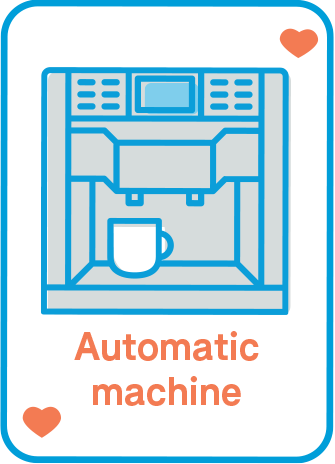
What Kate says about her perfect match:
“I have a Jura S8 that I use at least once a day – more on weekends or when we have guests. I love that I can get coffee quickly while half asleep first thing in the morning, and I love that it has custom settings for my favourite coffees. I’ve taught my kids to use it and they made me coffee every day when I was in Covid isolation, so it’s really easy to use.
“The only thing is that it feels like it constantly needs some kind of maintenance – it’s always beeping and flashing warnings about cleaning, filters or water change. And the branded products for maintenance are quite pricey.
“I’ve got a pod machine I use for travel and I’d say the convenience is similar but the Jura gives much better-tasting coffee!”
Automatic machine pros
Like a pod machine, an automatic machine is simple to operate – just press the button and your coffee appears. If you’re not a morning person, this is the machine for you: you can pretty much operate it while you’re still half asleep.
Unlike pod machines, you can choose your beans and they’ll most likely taste better because they’re freshly ground each time to your preferred grind.
They’re far easier to use than manual and semi-automatic machines as you don’t need to dose, tamp and extract the coffee, and they’ll often froth the milk for you too.
Some automatic machines have ‘self-cleaning’ modes, which make cleaning and descaling easier
Automatic machines tend to have several ‘programs’ you can set up with preferred styles of coffee – so your machine can cater to the double macchiato drinker and the cappuccino sipper in your household with ease. Plus it can churn out a complicated coffee order when you have guests, making it perfect for entertaining.
Some automatic machines have ‘self-cleaning’ modes, which make cleaning and descaling easier, and some will alert you that it’s time to switch to cleaning mode.
Automatic machine cons
Automatic machines are far from cheap: some run into the thousands of dollars. The cheapest automatic machine in our current test is $569 (but it’s also the lowest scoring), and the most expensive is $4199.
Spending extra doesn’t guarantee good coffee, however. In our automatic espresso machines review, the machines with the lowest taste test scores all cost more than $1500.
They may be called ‘automatic’ but many aspects of these machines are anything but. You’ll still need to clean and maintain them regularly, including emptying the coffee grounds and drip tray, filling the water tank, and descaling the machine. And with some machines you’ll need to clean the milk system after every coffee. That’s a lot of work for a machine that’s hailed as being a one-touch wonder.
If you don’t love the flavour, there’s only so much you can do to improve it
Plus, because all of the components are inside the machine, they can be tricky to clean and troubleshoot if things go wrong. The more moving parts a coffee machine has, the more potential points of failure, and having them repaired isn’t cheap.
While you’ll have some control over things like strength, temperature and grind, you still don’t get the same level of control as you would with a manual espresso machine. So if you don’t love the flavour, there’s only so much you can do to improve it.
Since they’re all-in-one units, automatic machines also have quite a large footprint and weight – up to 15kg and 40cm deep – so you’ll need to have the space for one.
Adrian: Coffee geek extraordinaire
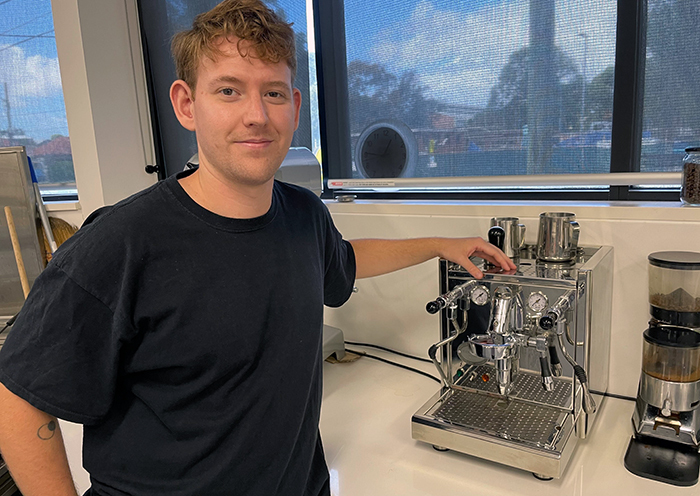
A test officer in the CHOICE small appliances lab, Adrian literally knows coffee machines inside out: it’s his job to put all the espresso machines CHOICE tests through their paces. Along the way he’s developed a love for all things coffee and likes to nerd out over each step of the espresso-making process.
Perfect match: A manual espresso machine
Why? If you’re serious about coffee, you’ll want as much control over your machine as possible – that way you can ensure every single variable is fine-tuned to make the best coffee. A manual machine is a must-have for coffee purists, but it isn’t for the faint-hearted, as you’re in charge of everything that happens, which means there’s no-one to blame but yourself if you churn out a terrible brew.
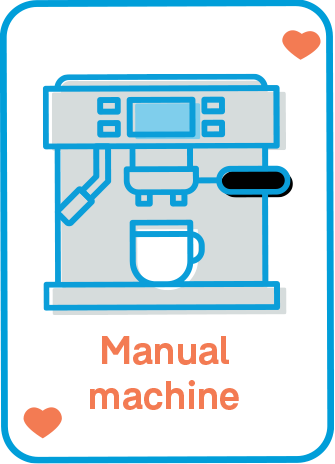
What Adrian says about his perfect match:
“What I love most is the taste. It’s up there with what I get at my favourite cafes and I sometimes even get worse coffees from a cafe compared to at home. It’s fun making different drinks and trying different recipes, and testing out different beans. It’s also nice to support local roasters and cafes by buying beans from them.
“It can sometimes be annoying, especially with a manual hand grinder to have to grind the beans right after waking up. And if you’re not careful it creates a mess – it’s pretty much a given you’ll need to wipe coffee grounds and water off the bench after using it.
“Learning to use the machine can take time and be frustrating as you feel like you’re wasting coffee, but once you learn how to make a good espresso it really becomes second nature. Overall it’s more work but you get a much better coffee out of it.”
Manual machine pros:
Once you nail the technique, a manual machine will give you the best tasting coffee of all the machines. You’ll be able to tweak every element to ensure coffee perfection.
And you can play around with lots of variables like different beans and extraction times to extend yourself and try something new.
A good manual machine combined with good skills will give you cafe-quality coffee for a fraction of the price, so even though you’re caffeinating at home you won’t feel like you’re missing out. The potential downside to this is that you might be disappointed by sub-par coffee when you do go out!
Manual machine cons:
Since you’re involved in every step of the process with a manual machine, they’re the most labour-intensive of the coffee machines. You’ll need to be on the ball the entire time – no daydreaming or wandering off while the coffee is flowing.
Because there are so many variables, there are plenty of opportunities for things to go wrong, and just one misstep can completely ruin your coffee. There’s much more margin for error than in machines with some degree of automation.
It does take time to develop the skills to make a good coffee, so if you’re not confident in your coffee-making abilities, this isn’t the machine for you.
Because there are so many variables, there are plenty of opportunities for things to go wrong
Just because a manual machine is less complicated than an semi-automatic one doesn’t mean it’ll be cheaper: some of the manual machines we’ve tested cost more than $3000. And unfortunately, buying an expensive manual machine won’t automatically make you a world-class barista.
Unlike pod and automatic machines, you’ll need to grind the coffee beans – either by buying pre-ground beans or grinding them yourself, which means you’ll have to buy a grinder too. And since you probably take your coffee seriously, you won’t want to skimp on a grinder, which can get expensive depending on what you buy. A good grinder is just as important as a good machine – consistent coffee grounds play an extremely important role in the quality of your coffee.

